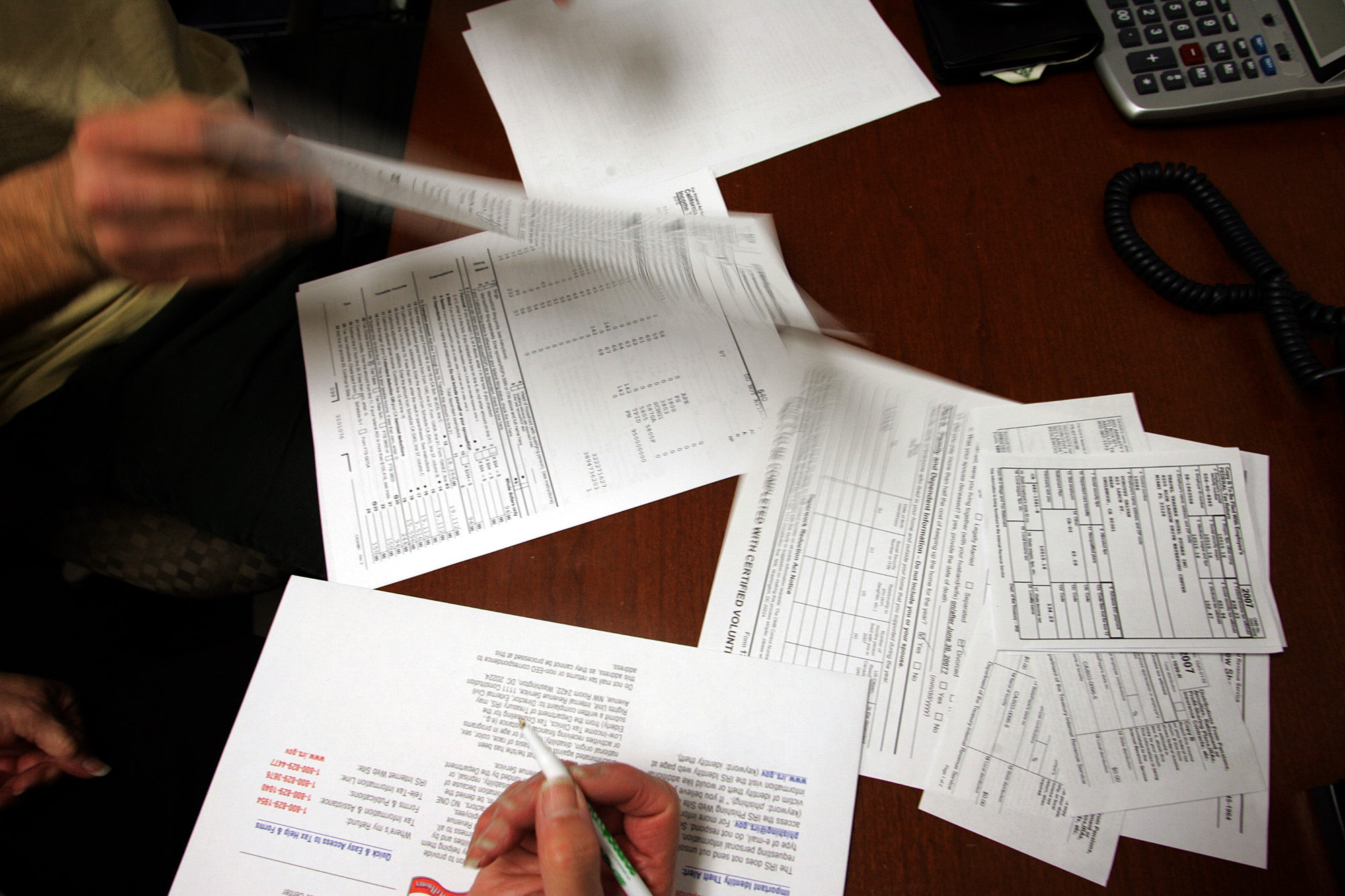
As April 15 — the deadline to file and pay taxes — approaches, taxpayers across the country are preparing returns, gathering up old forms and figuring out if they will be entitled to a refund or owe money to the Internal Revenue Service.
Tax filing season can be a stressful time in which people often hurry to submit their information. Mistakes can abound, from people entering the wrong Social Security numbers to forgetting to sign the tax return entirely. But fixing errors during tax season isn’t hard — it just takes knowing what went wrong and how to solve the problem.
Here’s what to do if you discover you made a mistake on your taxes.
What are the most common tax mistakes?
The most common mistakes people make when filing their taxes are neglecting to include necessary information, according to Mark Jaeger, director of tax development at tax preparation firm TaxAct. Filers frequently forget to give correct routing numbers for their bank accounts or make an error when listing their Social Security numbers. While taxpayers filing their returns electronically will likely be notified right away of their mistakes, Jaeger says, people who make mistakes when filing their taxes on paper could have their refunds delayed by six to eight weeks.
Another frequent error occurs when people file to get an extension on their tax return and assume it means they have more time to pay their tax bills, says Andrea Coombes, a tax specialist at NerdWallet. She says NerdWallet found in 2018 that 73% of people think filing an extension means they can delay their payment. That is not the case — an extension only allows a person more time to file their returns. The IRS wants its money by April 15, no matter what, Coombes says. Penalties for late payment of a tax bill are typically 0.5% of a person’s unpaid taxes each month and can grow up to 25%, according to the IRS.
Other mistakes include using the wrong filing status, according to both Coombes and Jaeger. People who are technically single filers or married couples filing jointly will often mark themselves under the head of household status on the returns, a designation that typically only applies to single people who are supporting dependents, says Coombes (like a single parent who counts their child as a dependent).
Filing under the head of household status could give a person better tax benefits than they would get under other statuses, according to Jaeger. For example, the single standard deduction this year is $12,000. For a head of household, it’s $18,000, marking a $6,000 benefit.
“The IRS, in this case, would know because the head of household requires a qualifying dependent,” Jaeger says. “They’re going to know if you make one up.”
There’s some good news: for those who are filing their taxes electronically, tax preparation software will alert people to many kinds of errors that might appear on a person’s tax returns. And when filed electronically, the IRS will automatically reject a tax return that has mistakes, giving the filer a chance to correct the error and resend the information.
Things can get unclear for people filing their taxes on paper. Being alerted to or fixing those errors can take longer, delaying the delivery of an eventual refund.
“If you’re not using tax software, a lot of these will be bigger problems,” Jaeger says.
Is there a penalty for filing an incorrect tax return?
Penalties typically fall to people who make an error that causes them to underpay on their taxes, Coombes says. For example, if a person claims a head of household status incorrectly, they may receive more tax benefits and end up paying less than they owe on their taxes. A person who fails to pay will face a penalty of 0.5% added to their unpaid balance each month plus interest.
People can also face a penalty if they fail to file their taxes at all and owe money to the IRS, Coombes says. Failure to file taxes can lead to a 5% penalty on a person’s unpaid balance per month. If you fail to file but are owed a refund, the penalty would not apply.
How can you refile your taxes if you made a mistake?
Anyone who makes a mistake on their tax returns that can’t automatically be solved through the electronic filing process can file an amended tax return using form 1040X.
Errors that call for filing an amended tax return through the 1040X include filing the original return under the wrong status, failing to report some income and claiming the wrong deduction, according to Coombes. The drawback with filing form 1040X, which involves going over your tax return to figure out what went wrong, is that it cannot be done electronically; rather, it must be mailed in.
For other mistakes, like math errors or missing forms, the IRS will alert the filer or fix the problem for them, Coombes says.
The deadline to file an amended return is about three years from the date you filed the original return.
More Must-Reads from TIME
- Why Biden Dropped Out
- Ukraine’s Plan to Survive Trump
- The Rise of a New Kind of Parenting Guru
- The Chaos and Commotion of the RNC in Photos
- Why We All Have a Stake in Twisters’ Success
- 8 Eating Habits That Actually Improve Your Sleep
- Welcome to the Noah Lyles Olympics
- Get Our Paris Olympics Newsletter in Your Inbox
Write to Mahita Gajanan at mahita.gajanan@time.com